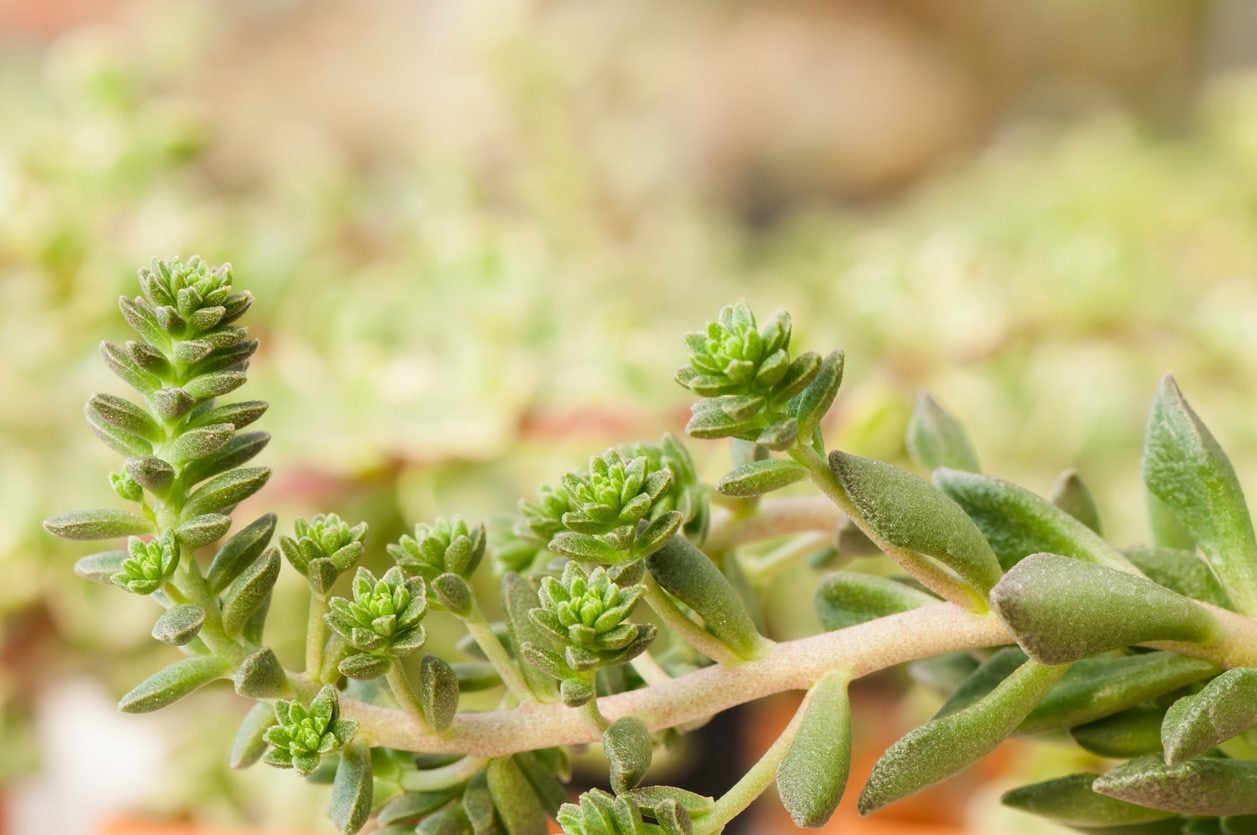My Succulent Is Too Tall: How To Prune A Leggy Succulent Plant


When it comes to drought tolerant plants, most succulents win the prize. Not only do they come in various forms and sizes but they require very little extra care once established. Mature plants and those in low light result in leggy succulent plants. If you want to know what to do if succulents grow too tall, continue reading for care and prevention.
Help, My Succulent is too Tall!
Most succulents are low growing beauties that fit easily into nooks and crannies in rockeries, flower beds, containers and among paving stones. Succulent pruning is not usually necessary but in the case of plants that become elongated and lose the compact nature for which they are often prized, the practice is a simple one. Knowing how to prune a leggy succulent can restore the desired size of the plant and also provide you with material with which to start another of these hardy and easy plants. You know it is time to manage your plant when you say, "My succulent is too tall." This may be from flowers, foliage or stems, and the plant may simply not fit into its original space or have a reduced appearance. What to do if succulents grow too tall will depend upon the variety of plant you are growing. When plants are grown indoors or in other low light situations, they undergo a process called etioliation. This is elongation of the stem as the plant stretches upward to catch more light. The simple solution is to move the plant to a southern exposure. But this still leaves that leggy party. Fortunately, leggy succulent plants can be topped, removing the part that is too tall and allowing new shoots to form and develop into a more compact plant.
How to Prune a Leggy Succulent
Succulent pruning is not rocket science. You need sharp, clean scissors and the conviction that you will do no harm to the plant. The amount you remove depends upon how tall it has gotten but you must leave several healthy leaves so the plant can photosynthesize and gather energy to form new shoots and feed itself. In cases where the plant has developed a corky or almost woody stem, you will need pruners or even a new razorblade to snick off the offending part of the plant. Make your cut just above a set of leaves for a better appearance and to avoid fungal issues on stray stems. Continue the same care and move the plant to a sunnier area to avoid a repeat of the situation. Don't throw away the cutting! You can easily start it in a separate location and double your stock of your favorite succulents.
Rooting Leggy Succulent Plants
Let the part you cut off callus on the end for a couple of days. If the cutting is very tall – more than 5 inches (1.27 cm.) – you can cut it again into a more manageable size. Let each cut end dry out before planting. With succulents you rarely need a rooting hormone, but it might help roots establish more quickly. Some succulents will form roots if just left out to dry. Place the callused cutting on the top of succulent soil mix or for a long stem, insert it just slightly into the medium and use a small stake to hold it upright. Keep the container dry for a week and then mist the top of the soil. After the plant has rooted, give it the normal amount of water for that type of plant. You now have a whole new plant simply by improving the appearance of the old. Succulents are amazing that way!
Sign up for the Gardening Know How newsletter today and receive a free copy of our e-book "How to Grow Delicious Tomatoes".

Bonnie Grant is a professional landscaper with a Certification in Urban Gardening. She has been gardening and writing for 15 years. A former professional chef, she has a passion for edible landscaping.